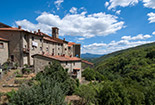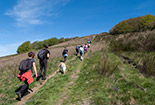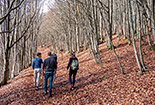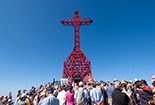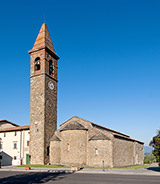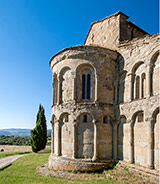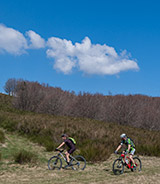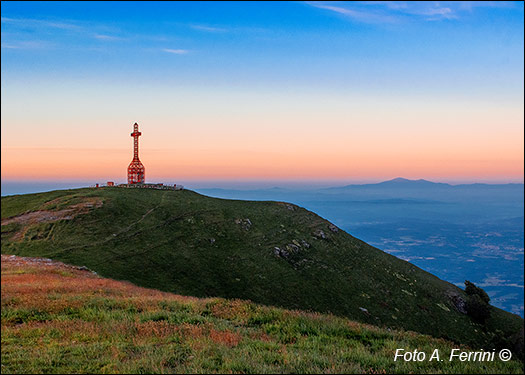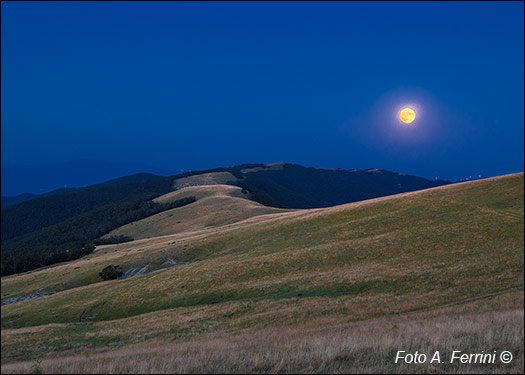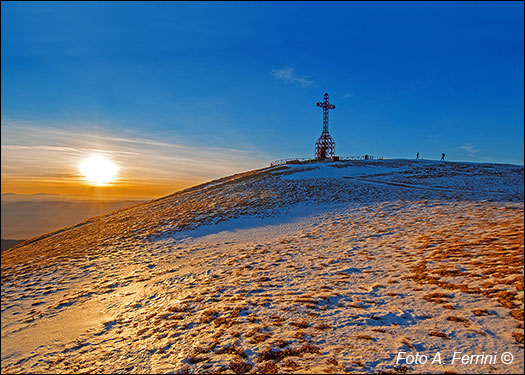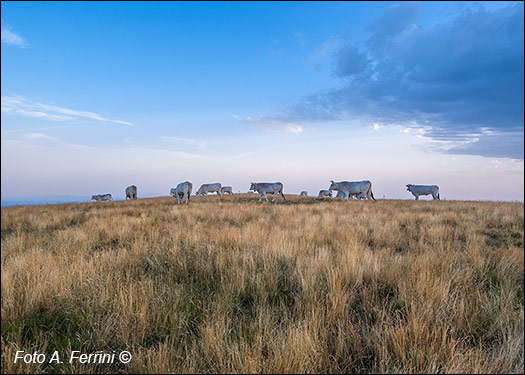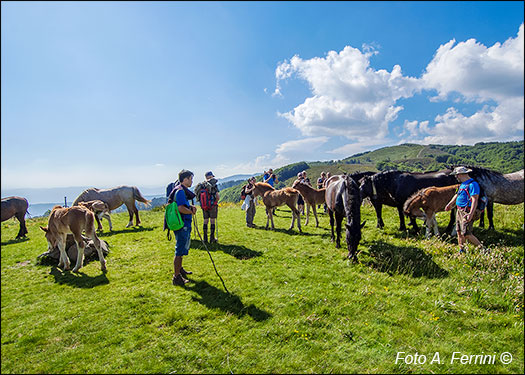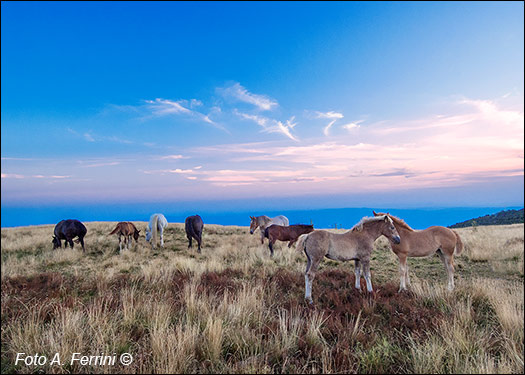Pratomagno
between Casentino and Valdarno, two valleys that can be found in every detail with this site
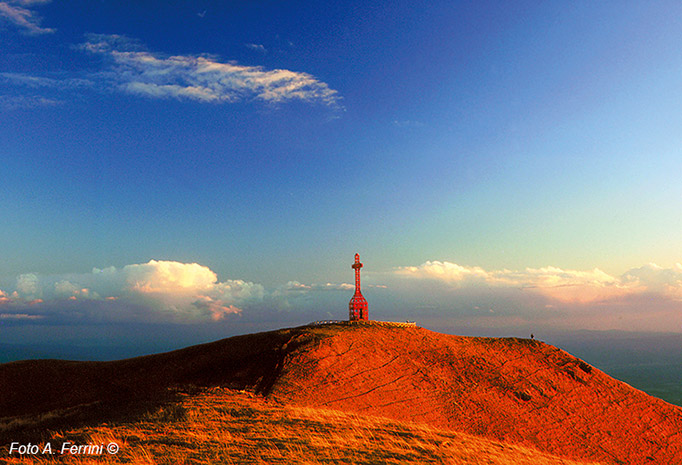
Texts and photos by Alessandro Ferrini ©
100 accurately described images of Pratomagno. Click to enlarge
The mountain that divides and unites Casentino and Valdarno
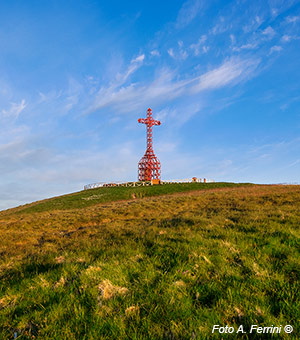 The Pratomagno is a great massif that mainly stretches over the Province of Arezzo, but with its northernmost part (the Vallombrosa area) it also extends over the Province of Florence. Geographically, this mountain divides the Casentino from the Upper Valdarno: from every point of its ridge we can observe both of these valleys by simply turning our heads. The Casentino and the Valdarno are divided but at the same time united by the Pratomagno: in fact, there are several routes that since the Middle Ages cross this massif connecting these two lands, which are the first ones the Arno river flows through.
The Pratomagno is a great massif that mainly stretches over the Province of Arezzo, but with its northernmost part (the Vallombrosa area) it also extends over the Province of Florence. Geographically, this mountain divides the Casentino from the Upper Valdarno: from every point of its ridge we can observe both of these valleys by simply turning our heads. The Casentino and the Valdarno are divided but at the same time united by the Pratomagno: in fact, there are several routes that since the Middle Ages cross this massif connecting these two lands, which are the first ones the Arno river flows through.
The emblem of the Pratomagno is the great famous iron cross built in 1928 in the highest point of its very long crest, at the height of 1594 meters. However, the characteristic for which this mount is well-known lies in its name: a large grassland that stretches over its whole ridge (about twenty kilometers), from Mount Lori to Mount Secchieta. This vast field, located on such a high point that makes it possible to enjoy incredible views over half part of Tuscany, makes the Pratomagno a perfect place for 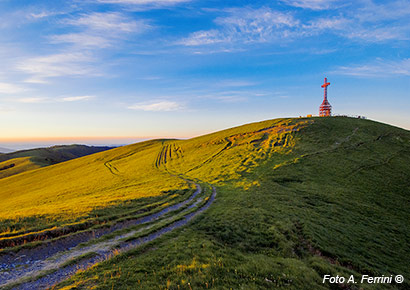 both short walks and tiring itineraries. Here, the natural environment is quite changjng in its colors and its environmental conditions, depending on both the time of the day and the season. Walking on these grasslands during full-moon nights is particularly charming. In addition, the Pratomagno ridge is a sort of natural garden: from April to September many many varieties of colorful flowers grow here. The flowering of daffodils is particularly beautiful; it takes place during the period May 15 - May 20 before the hike that, coming from Mount Lori, leads to Cima Bottigliana.
both short walks and tiring itineraries. Here, the natural environment is quite changjng in its colors and its environmental conditions, depending on both the time of the day and the season. Walking on these grasslands during full-moon nights is particularly charming. In addition, the Pratomagno ridge is a sort of natural garden: from April to September many many varieties of colorful flowers grow here. The flowering of daffodils is particularly beautiful; it takes place during the period May 15 - May 20 before the hike that, coming from Mount Lori, leads to Cima Bottigliana.
However, the charm of the Pratomagno is not only its famous crest: on the slopes of this massif (more gradual the ones of Casentino, while more steep and rocky the ones of Valdarno) 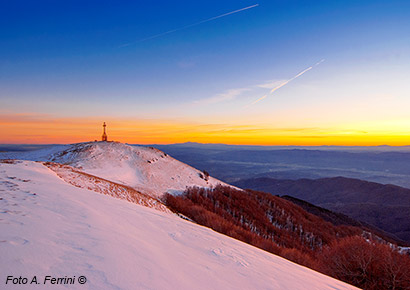 there are luxuriant forests of beech trees, spruce trees, chestnut trees, oak trees and other varieties of plants. These woods are perfect places for both mushroom collecting and fresh, relaxing summer walks.
there are luxuriant forests of beech trees, spruce trees, chestnut trees, oak trees and other varieties of plants. These woods are perfect places for both mushroom collecting and fresh, relaxing summer walks.
Moreover, the Pratomagno is a massive water reservoir for its underlying territories. Many of the springs we find here later become creeks and then, while descending this mount, ditches and torrents with fresh, clean water and often spectacular shapes.
This mountain also has historical aspects of primary importance. The ruins of Badia Santa Trinita (about 960 A.D.) in the Municipality of Talla and the Abbey of Vallombrosa (around 1050 A.D.) on the oppisite side of this massif prove how greatly important the Pratomagno was already being in this age. However, what also contributed in the making of the Pratomagno ancient history are the many villages located on both the Casentino and Valdarno slopes of this mountain, at a height included between 700 and 1000 meters. Almost all of them have Medieval origins and are often fortified; nowadays, they show a beautiful and organised architecture that accurately describes their past. Fine artworks are often kept inside the small churches of these hamlets: this is an additional evidence of their important history. On the Casentino side we find: Montemignaio, Cetica, Quota, Raggiolo, Carda, Faltona, Capraia and Pontenano. While, on the Valdarno one we can visit: Anciolina, Chiassaia, Trappola, Poggio di Loro, Rocca Ricciarda and Vallombrosa.
As already mentioned, one of the peculiarities of Pratomagno is the change in its appearance over the seasons. In spring the meadow on the mountain ridge and the beech woods next to it are painted a soft green. In summer, the foliage of the beech trees turns dark green, the lawn, on the other hand, first turns yellow, then becomes orange, depending on the degree of drought. In autumn, the beech trees take on very warm colors, while the first rains give the lawn a little green again. In winter the lawn becomes brown, while the beech trees, now devoid of leaves, when illuminated by intense light become a silver color that is beautifully carved on the blue sky. The snow creates a scenography that is something incredible. The color of the mountain is not only white, but pink, yellow, orange, depending on the sunlight.
The sunrise in Pratomagno is fantastic, especially with the soft green of spring that blends with a sky that fades from pink to light blue. Sunsets are often fiery: in a few minutes the sky and the mountains go from yellow to orange to red. Something fascinating is the Pratomagno illuminated by the light of the moon. The atmosphere that is created is indescribable, you have to live it.
The photos on this page, in particular the three below, make us understand much better than words the spectacles made of light and nature that this mountain can offer us. Click above to enlarge them.



